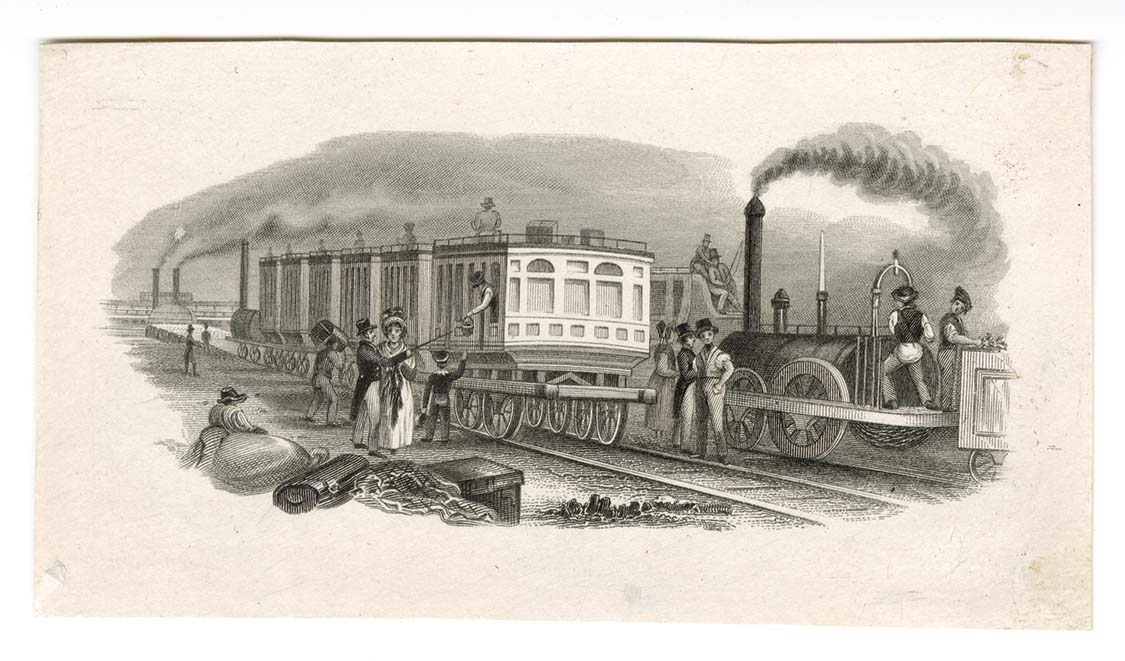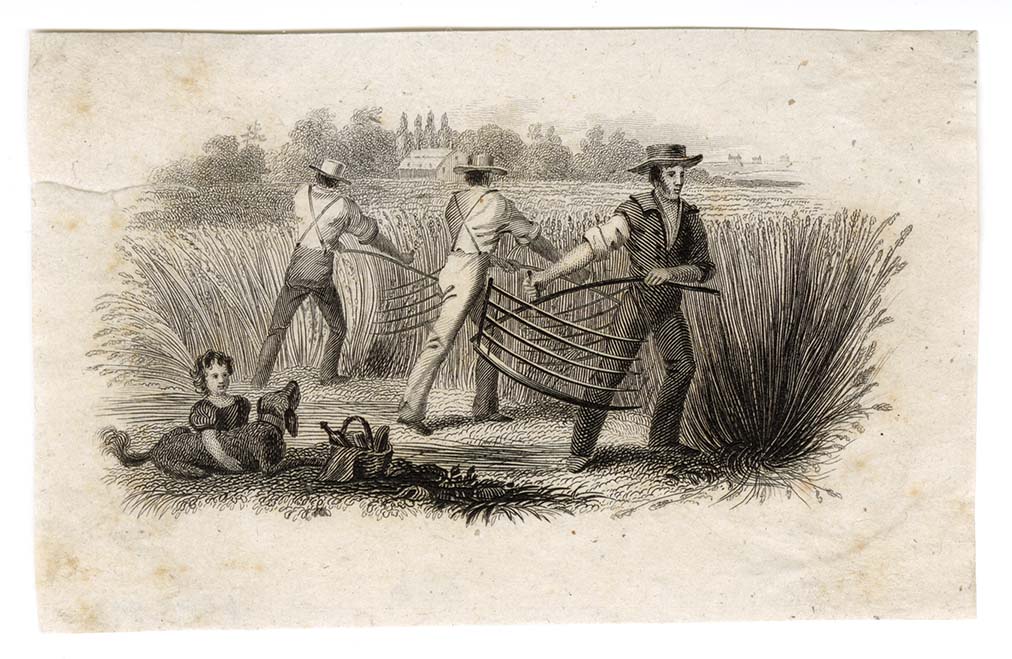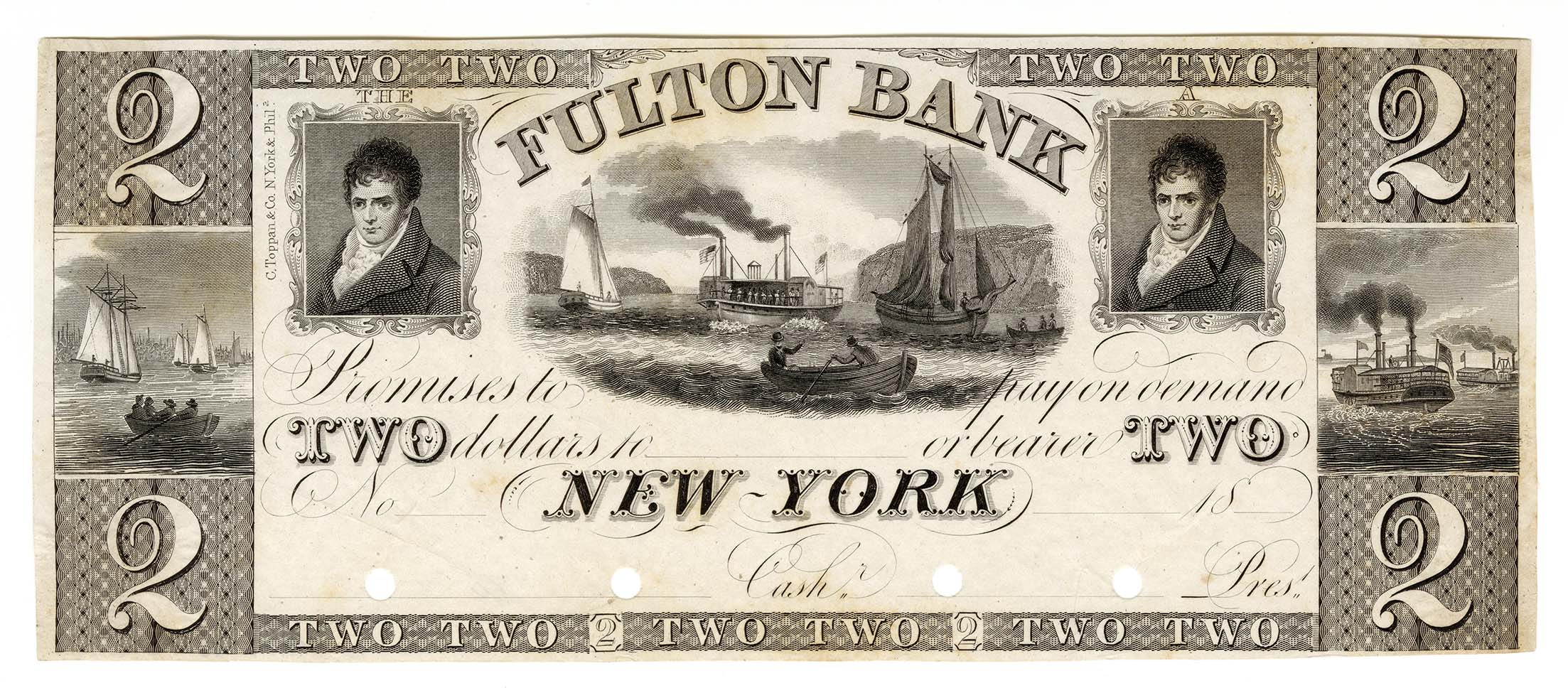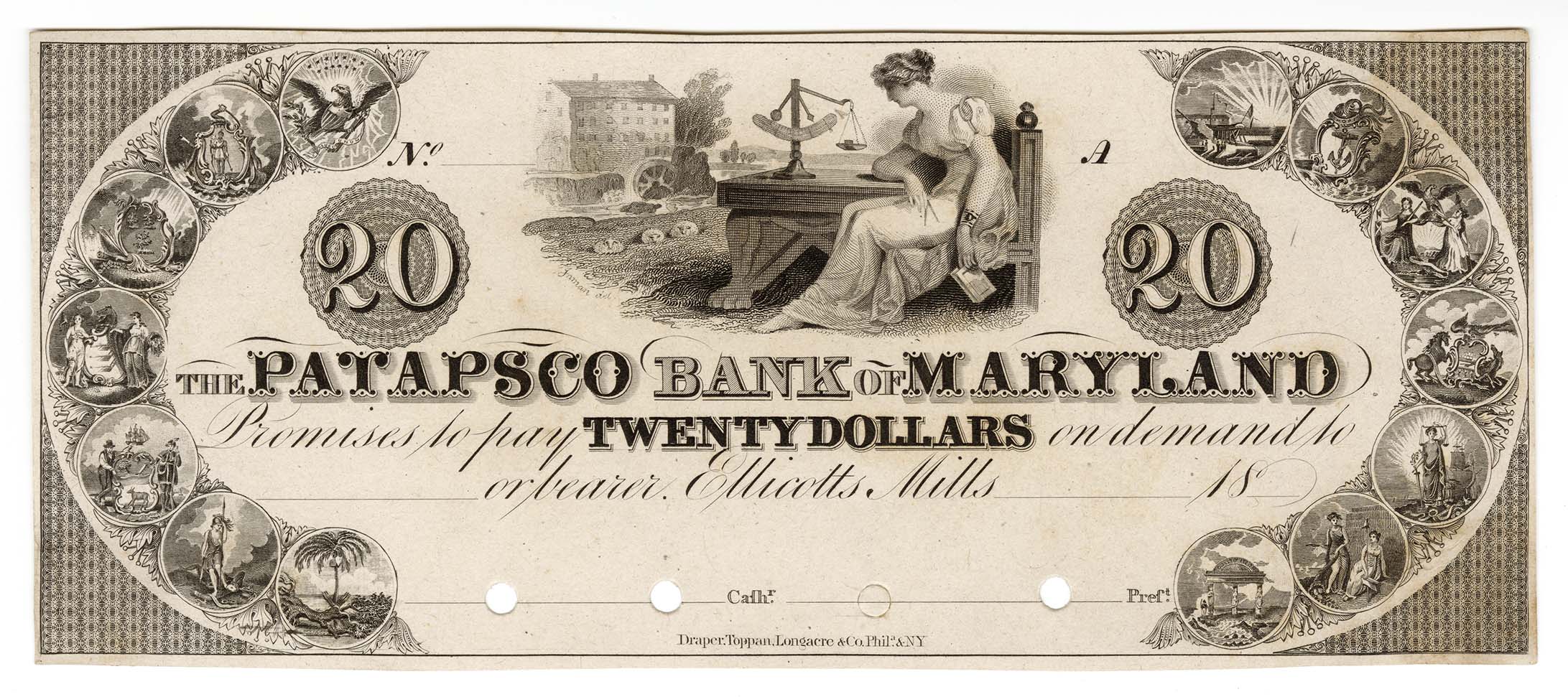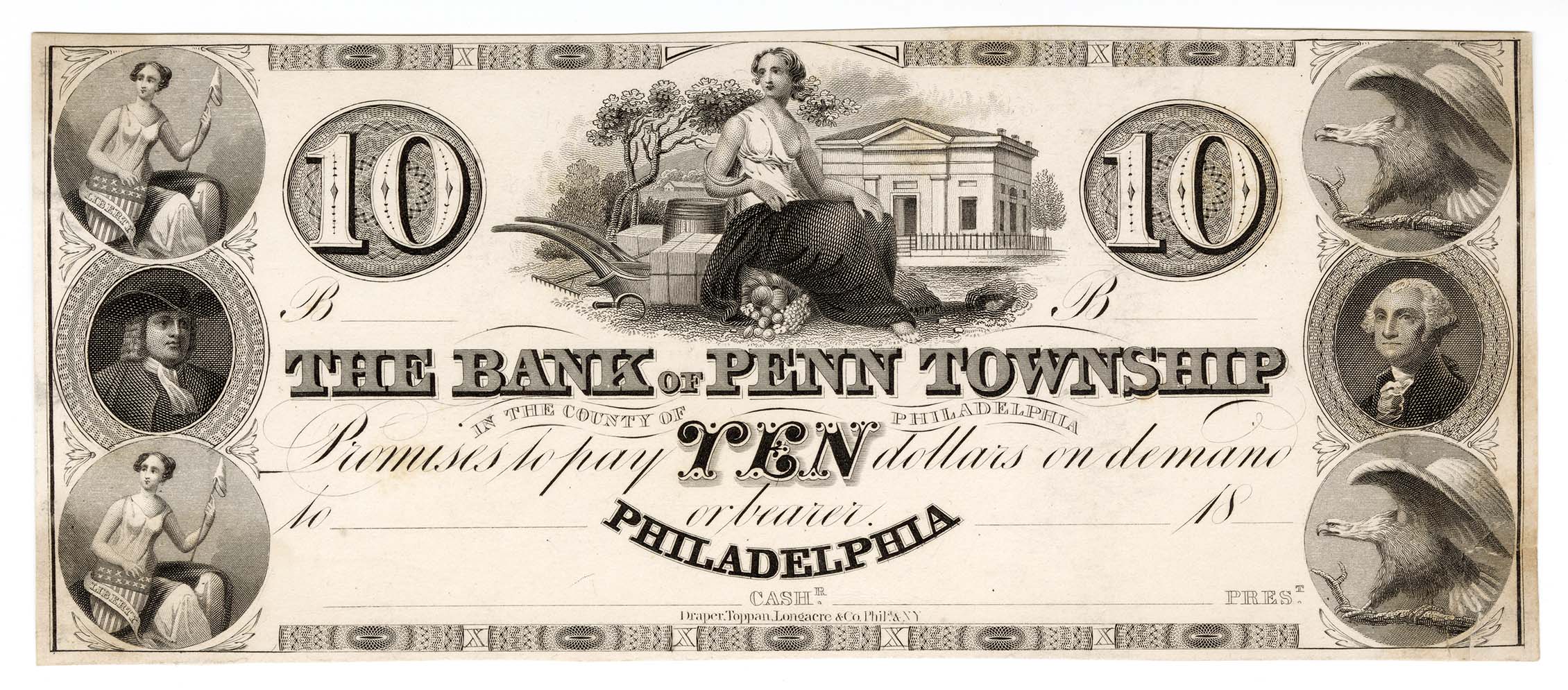BANK NOTES:
Engraving Iconography of Early America
Bank notes were originally issued by commercial banks which obligated them to redeem the notes for legal tender, usually gold and silver. One problem with bank notes was the risk of counterfeiting. Banks enlisted engravers to create the notes, which utilized vignettes as an anticounterfeiting feature. A vignette is often defined as a small illustration without a definite border that blends into its background. Bank notes containing highly detailed vignettes made them harder to fake. The human portrait or figure was the most difficult to engrave, and their inclusion gave greater security. The subject matter of the vignettes from the 1810s-1830s were generally either allegorical, depictions of women, or scenes of early America.
